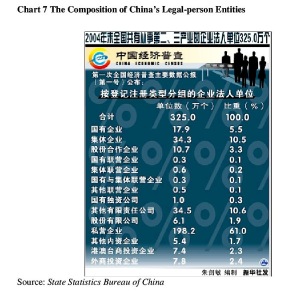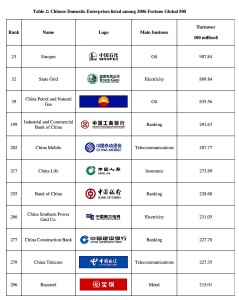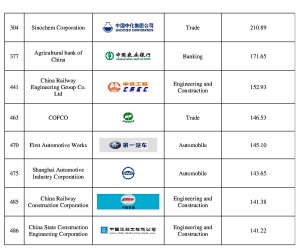Chapter 2 – China’s Economy And Enterprises ~ Part Two: Business Competitiveness In Which China’s Economic Strength Is Based ~The Irish Asia Strategy and Its China Relations
No comments yet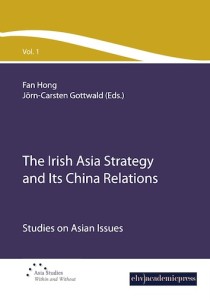 Part Two: Business Competitiveness on Which China’s Economic Strength IS Based
Part Two: Business Competitiveness on Which China’s Economic Strength IS Based
A nation’s economic strength is based on the strength of its enterprises, which comes from their individual competitiveness. Therefore, the competitiveness of an enterprise forms the finest part of the foundation on which the competitiveness of a nation stands.
2.1 Reform, development and basic structure of Chinese enterprises
China maintains a basic economic system characterized by dominant state-ownership, and the co-existence of economic entities of various ownerships. Over the past two decades of reform to build the socialist market economic system, the market is becoming more dynamic and is playing a bigger role in ensuring a sustained and steady economic and social development. According to the first national economic census, out of 3.25 million legal-person entities in China by the end of 2004, there are 192,000 state-owned enterprises (including joint ownership, and exclusively state-owned enterprises), accounting for 5.9% of the total; 456,000 collective enterprises (including joint ownership and contractual cooperative enterprises), accounting for 14%; 406,000 other limited-liability and shareholding companies, accounting for 12.5%; 1.982 million private enterprises, accounting for 61%; 62,000 domestic enterprises (including state and collective partnership and other joint ownership enterprises), accounting for 1.9%; 152,000 foreign-invested enterprises and enterprises invested by Hong Kong, Macao and Taiwan compatriots, accounting for 4.7% (See Chart 7).[i]
The reform of state-owned enterprises is a key and central part of China’s reform of its economic system. Starting from 1978, the reform experienced four stages, namely, decentralization, the separation of ownership and management, the establishment of a modern enterprise system, and national economic strategic restructuring.
The efforts made during the past two decades have solved four basic problems of system, pattern and structure, social positioning, and labour status. To be specific, with regard to system, state-owned enterprises have been successfully separated from the government, becoming a major independent player of the market with the government as the investor.
Regarding pattern and structure, most state-owned small and medium enterprises and 2/3 of the large and medium-sized enterprises have withdrawn from the structure. Regarding social positioning, the state-owned enterprises have turned from social entities in the past to economic entities, stripped of social functions. Regarding labour status, there is a contractual relationship between employees and the state-owned enterprises, following the law of the market.
While promoting and deepening the reform on state-owned enterprises, China encourages the development of non-public economies by breaking down institutional and policy barriers, implementing incentive and supportive measures, welcoming the participation of non-public economies in the reform of the state-owned enterprises, providing better services, and enhancing guidance and management of the non-public economies.
Since 1990s, the contribution of non-state economies to the national economic aggregate has been rising. The added value created by non-state economies exceeds 20% of GDP[ii]. In 2006, investment in fixed assets made by non-state economies accounted for 68.1% of the total social investment in fixed assets. Among the added value created by industrial enterprises with a large scale, non-state enterprises contributed 82.6% (including enterprises with shares held by the state) in 2006. Excluding enterprises with shares held by the state, the percentage was 64.4%. In terms of export and import volume, non-state enterprises contributed 80.3% and 71.5% respectively[iii].
2.2 The competitiveness of Chinese enterprises since reform
Since reform and opening up, enterprises in China have enjoyed a rapid growth with overall strength and competitiveness substantially enhanced. According a report issued by the China Federation of Enterprises and the China Entrepreneurs Association on 2006 Development of Chinese Large Enterprises: Tendency, Problems, and Suggestion[iv], large enterprises, as represented by the Top 500 Chinese Enterprises, Top 500 Chinese Manufacturers, and Top 500 Chinese Service Providers, have maintained the momentum of fast growth in recent ears, with expanding scale, remarkable quality improvement and enhanced capital operation. The proportion of the turnover of the top 500 Chinese enterprises to that of top 500 global enterprises is rising year by year from 5.26% in 2002 to 9.32% in 2006 with an average annual increase of 1 percentage point.
In terms of the total amount of growth, the total turnover and capital of the top 500 Chinese enterprises increased by 20.41% and 22.67% respectively in 2006, greater than the increase of top the 500 global enterprises (12.7% and 7.4%). The gap between the two has been gradually narrowed.
However, there is still a big gap between Top 500 in China and Top 500 in the US and Global 500[v] in the following aspects:
First, scale is comparatively small. The turnover, profits, and capital of Top 500 Chinese Enterprises are 19.4%, 10.4% and 21.5% of their American peers, and 9.3%, 6.7%, and 7.1% of their global peers.
Second, labour productivity is lower. Per capital turnover and profits of Top 500 Chinese Enterprises are 20.5% and 16.7% of that of Global 500. Profits gained by Exxon Mobil alone account for 45.1% of the total profits of Top 500 Chinese Enterprises.
Third, there are the problems related to ownership structure and performance. Among Top 500 Chinese Enterprises in 2006, there were 346 state-owned and state-controlled enterprises, accounting for 69.8%, and the number of private enterprises, though rising to 87 in 2006, still accounts for 17.4%. According to China Federation of Enterprises, there is a big difference between the enterprises with different ownerships in performance. Though state-owned or state-controlled enterprises enjoy absolute advantages in scale, they lag far behind others in economic results and efficiency.
Fourth, there is an irrational distribution of industrial structure by occupying the low-end position in the international industrial chain. Among Top 500 Chinese Enterprises in 2006, there were 278 manufacturing enterprises, accounting for 55.6%, 143 service providers, accounting for 28.6%, 79 other types of enterprises, accounting for 15.8%. In contrast, there were only 153 manufacturing enterprises in Top 500 US Enterprises, accounting for 30.6%, 323 service providers, 64.6%, and 24 others, 4.8%.
Fifth, there is a lack of innovation. Most of Top 500 Chinese Enterprises rely on importing technologies and lack independent research and development. As revealed by a survey of the State Statistics Bureau, the R&D fund of key enterprises in 2003 was only 1% of the sales volume, lower than the international standard of 2% for normal, and 5% for being competitive.
Sixth, there is a lack of awareness of brand names. Some Chinese enterprises don’t even pay any attention to brands and IPR protection. Among the 100 Most Influential Brands of 2003 rated by the World Brand Laboratory, there was only one Chinese brand – Haier, ranking 95th with a brand value of RMB53 billion.
The above analysis shows that the most important factor that affects the competitive strength of Chinese enterprises is their poor independent innovative capabilities. From the perspective of the national strategies, independent innovation is the quintessential theme around which Chinese enterprises shall pursue their developments. Only by having independent innovative capabilities can Chinese enterprises become bigger and stronger. Ireland provides a lot of successful experience in this regard, from which we should learn.
2.3 The combination of “absorbing foreign investment” with the “going international” of Chinese enterprises
China pursues an all-dimensional reform. By combining “absorbing foreign investment” and “going international” of Chinese enterprises, China intends to let foreign investment and multinationals play an active role in the national economic and social development on the one hand, and enhance the competitiveness of Chinese enterprises in the international arena through market expansion and mutually-beneficial competition on the other.
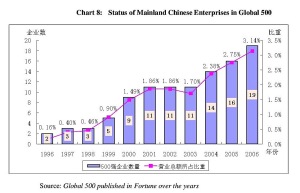
Chart 8: Status of Mainland Chinese Enterprises in Global 500 Source: Global 500 published in Fortune over the years
China has been the No.1 developing country in attracting FDI for 16 consecutive years. According to a survey conducted by UNDP, China will remain the most attractive to overseas investment in the coming years. Up to the end of March 2007, there were 330,000 foreign-invested enterprises in China, with a total paid-up capital of USD701.34 billion. These investors come from nearly 200 countries. 470 out of Global top 500 have invested in China. There are over 750 foreign-invested R&D businesses in China. Over 40 multinational corporations have regional headquarters in China, mainly in Beijing and Shanghai. Up to the end of 2005, the export volume of foreign-invested enterprises in China accounts for 58.3% of the total, contributing 20.72% of the total tax income of China, 28.6% of the total added industrial value, and employing over 25 million people, over 10% of the urban employment in China.[vi]
During the 11th Five-Year-Plan Period, China will follow the scientific view of development to further improve the efficiency of the utilization of foreign capital by diverting foreign capital to projects related to ecological construction, environmental protection, energy and source conservation and utilization so as to use foreign capital to improve domestic industrial structure and technological standards.[vii]
While giving priority to the attraction of foreign investment, China has been pressing ahead with the “going global” strategy for two reasons.
First, rapid economic development and growing overall national strength have laid a good material foundation for Chinese enterprises to go international.
Second, relevant government agencies have actively promoted trade facilitation by establishing and improving trade promotion services. This has offered policy
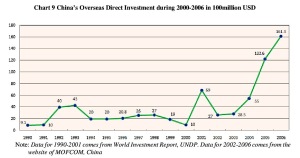
Chart 9 China’s Overseas Direct Investment during 2000-2006 in 100million USD
Note: Data for 1990-2001 comes from World Investment Report, UNDP. Data for 2002-2006 comes from the website of MOFCOM, China
support and legal protection for Chinese enterprises to invest outside the country. Besides, there has also been intensified state financial assistance and the participation of financial institutions in large-scale investment projects overseas. Thanks to these policies, Chinese enterprises have been greatly motivated, resulting in a sharp increase in overseas investment over the past 4-5 years (See Chart 9).
In 2006, overseas direct investment made by Chinese enterprises reached USD16.13 billion, up 31.6% over 2005, ranking 13th in the world compared with 17th in 2005. Up to the end of 2006, China’s overseas direct investment in non-financial projects totaled USD 73.33 billion[viii]. During the same period, global FDI outflow in the world stood at USD 1230.4 billion, with a total volume of USD 11.9023 trillion[ix]. The FDI outflow and total amount of China are 1.31 and 0.62% of the world’s total.
NOTES
[i] Major Statistics Bulletin No.1 of the First National Economic Census, Statistics Bureau of China.
[ii] Development Course of China, keynote speech made by Madame Wu Yi at the first Sino-US strategic economic dialogue on December 14, 2006. http://www.china.com.cn/news/txt/2006-12/14/content_7505130.htm
[iii] China Industrial and Commercial Times, 2006 Report on the Development of Non-state Economies, by Xia Xiaolin, State Development and Reform Committee, February 1, 2007.
[iv] China Federation of Enterprises and Entrepreneurs Association launched Top 500 Chinese enterprises in 2002, Top 500 Chinese Manufacturers and Top 500 Chinese Service Providers in 2005, and Top 200 Chinese Performers and Top 200 Chinese Tax-payers in 2006.
[v] 2006 Development of Chinese Large Enterprises: Tendency, Problems, and Suggestions, China Federation of Enterprises and China Entrepreneurs Association; A Comparison Between Top 500 Enterprises in China and the US, China Federation of Enterprises, March 15, 2007.
[vi] China Foreign Investment Report 2006, Ministry of Commerce of China.
[vii] The 11th Five-Year-Plan on the Utilization of Foreign Investment, State Development and Reform Commission, November 10, 2006.
[viii] Brief Report on China’s Overseas Direct Investment in Non-financial Businesses in 2006, MOFCOM website, February 13, 2007.
[ix] UNCTAD “Foreign Direct Investment Surged Again in 2006”_UNCTAD Investment Brief NO.12007.
You May Also Like
Comments
Leave a Reply
